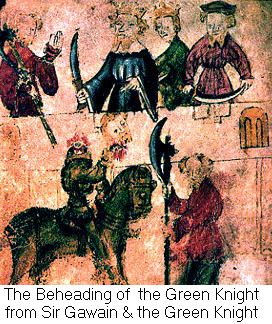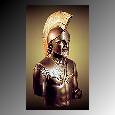|
The Epic and the Medieval Romance |
|
The medieval romance differs from the typical epic in a number of key ways:
| Epic stresses heroic deeds | Romance stresses tales involving knightly adventures |
| Epic's values are those of a heroic age | Romance's values are those of a chivalric age |
| Motivations include loyalty to country, home, and/or the gods | Motivations include courtly love, pious faith, and desire for deeds of valor |
| Epic stresses the values of nationalism and grave matters | Romance stresses the values of fantasy and mystery |
| Epic tends to be more serious | Romance tends to more light-hearted |
| Epic tends to be more tightly structured | Romance tends to be looser in structure |
| Of course, there are problems with this kind of comparison. Obviously, the two forms have much in common. Some epics, such as Dante's, tend to observe many qualities associated with the romance. Some romances, like Sir Gawain, are tightly structured. Indeed, historically, the two forms merged in the 16th and 17th centuries, creating romantic epics, like The Fairie Queene and Orlando Furioso. Nonetheless, the medieval romance in general has a different, freer, lighter spirit than the traditional epic, and Sir Gawain is no exception. |

